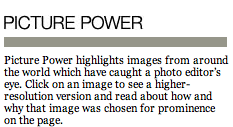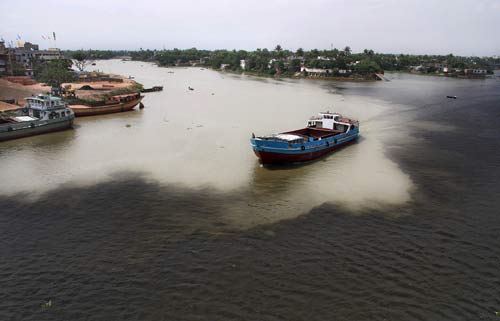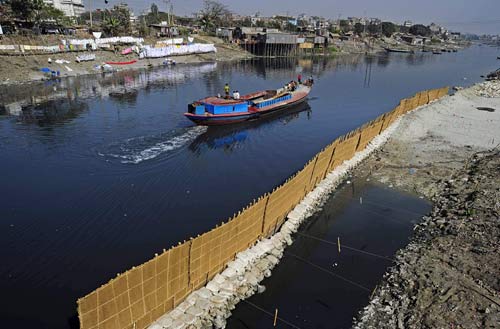To the rest of the world, Abu Ghraib is associated with inhuman torture, incarceration without trial and arrogant US unilateralism. To the farmers of Iraq, Abu Ghraib was better known for the national seed gene bank, started in the early 70s. In fact, Iraq?s most well-known wheat variety is known as ?Abu Ghraib?. The country precious heritage is now all but lost.
Facing the same unsolicited adversary, Syria is under a similar threat. The Centre for Agricultural Research in Dry Areas (ICARDA) is situated there and still holds remaining samples of Iraq?s threatened seeds. It is worrying because the planned destruction of Iraq?s agriculture is not widely known. Modern Iraq is part of the ?fertile crescent? of Mesopotamia where man first domesticated wheat between 8,000 and 13,000 years ago, and home to several thousand varieties of local wheat. As soon as the US took over Iraq, it became clear its interests were not limited to oil. In 2004, Paul Bremer, the then military head of the Provisional Authority imposed as many as a hundred laws which made short work of Iraq?s sovereignty. Continue reading “Control by seed”
Category: environment
Blog Competition
?Green bloggers: win a trip to Brazil to cover World Environment Day 2012, on June 5!?
The United Nations Environment Program (UNEP), in partnership with?TreeHugger, is yet again sponsoring a free trip to Brazil for a winning blogger to write, blog and tweet aboutWorld Environment Day.
Bloggers are invited to enter competition via online submissions of blog articles on the Green Economy. The top ten bloggers, selected by a UNEP-TreeHugger?jury, will be invited to a second round of blogging ? blogdown!
The winner of this online showdown (blogdown) will be determined by an online community via the World Environment Day website. Readers will ?like? any of the posts in order to win an extra vote for their favourite blogger.
The blogger who accumulates the most votes by the end of April 2012 wins the competition and will be invited to blog about World Environment Day in Brazil.
What?s included?
Flights, accommodation, visa costs and travel within Brazil to WED events will be covered.
Timing:
World Environment Day is on June 5th, 2012. The contest winner will be flown to Brazil for about three days, beginning June 3rd and ending June 6th 2012. Short-listed and winning posts will be published on?TreeHugger?and the World Environment Day websites.
Costs:
Entrants will be expected to ensure they are able to travel to Brazil for the duration and cover any other costs (e.g. vaccinations).
Bird show at NID campus
I don’t get distracted easily, but the spectacular air show in the skies above the football field at the NID campus in Ahmedabad, India, made portfolio reviews difficult.
Sit back, relax, and enjoy this clip on full screen.
Win for Jashim Salam
Jashim Salam wins Honourable Mention at FCCT Photo Contest:
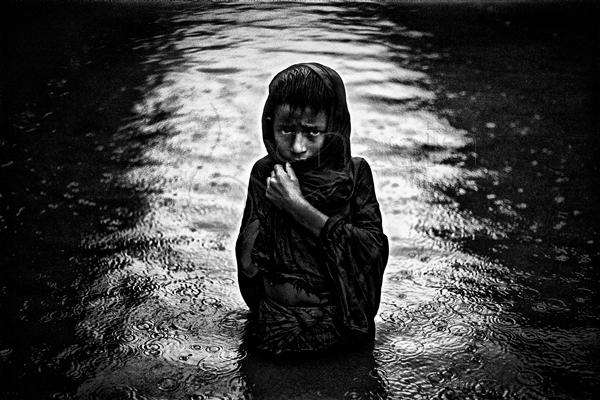
Jashim Salam is a Chittagong, Bangladesh-based photographer working for DrikNEWS, an international news photo agency, since 2008. He is also studying photojournalism in The South Asian Media Academy and Institute of Photography. His work focuses on social documentary such as profiles of migrant workers, handicapped people, and climate-change refugees. His work has been published in The Sunday Times Magazine, Reader’s Digest, Better Photography, CNN, Photojournale, National Geographic online, Reuters, and many others. He is the recipient of many awards including the Jury Special Award in the 6th Humanity Photo Awards.
Not for art's sake

Abstract of keynote presentation given at National University of Taiwan
8th January 2012. Taipei
Subscribe to ShahidulNews
One of the videos presented. A compilation from several videos on major protests in 2011
Long before CSR had become a buzzword and superstars and corporates began to find it essential to have pet social causes to support, we had set up Drik, a small organisation in Bangladesh, which made social justice its raison d’?tre.
Over two decades later, when my show on extra judicial killings at the gallery of Drik, was interpreted by a group of international curators as a ?fantastic performance?. It was time for me to take stock, and see where the art world situated itself and whether I belonged to this marketplace.
As collective movements go, the sub-continent has had its share. Colonial rule, oppression by the landed gentry, women?s struggle for equality in a patriarchal society and the injustice of caste have all been challenged. The solidarity of sustained groups, often against overwhelmingly stronger entities with far greater resources. had been a trademark for undivided India and for Bengal in particular.
It was the dynamics of a ruling class propped up by local agents who stood to profit from inequality, that led to the Gandhian strategy of non-violent resistance. Other methods had also been tried, and Subhas Chandra Bose, with a much more militant outlook, also had a huge following. The Tebhaga peasant movement by the Kisan Sabha had led to laws being formulated that limited the share of the landlords.
Partition did not cure these ills. The ouster of the British did not break up the class structure, but replaced one set of exploiters with another. The British, and other imperial powers continued to maintain unequal trade relations, sometimes in the guise of aid.
Cultural activists in Bangladesh had operated within this milieu. With the military under the control of the West wing, the more populous East Pakistan felt the weight of oppression. Military rule became the vehicle for continued repression but failed to quell the unrest and even the final genocidal attack on the people of East Pakistan, was repulsed by a countrywide resistance.
An independent Bangladesh, free of foreign occupiers, should have been a land free of repression. The reality was very different and cultural activists have had to find new ways of resistance. This has required documentation, articulation and tools of creative expression to deal with injustice in many forms. Having been failed by the major political parties (both government and opposition), cultural actors formed their own groups. Operating with minimum resources, we devised numerous initiatives to mobilise public opinion. Using both new and traditional media, as well as the networking ability of social media we formed lean and tenacious campaigns that chipped away at the establishment and its cohorts insisting on being heard and bent on achieving justice.
But the corporatization of modern Bangladesh has brought about many changes. I remember as a child that we used to respond to natural disasters by grouping together, singing songs, raising money, collecting food and old clothes and going out to affected areas to distribute them. We now leave such activities to the NGOs. Social movements are now sponsored by multinationals and protesters in rallies have sunshades parading the brand logos of telecom companies.
We had simultaneously taken on the hegemony of the west and its new southern accomplices, as well as the repressive regimes that operated within the nation state. But today we also need to examine how social movements have been appropriated, and our inability to operate without ?funding? regardless of the cause seriously limits our capacity for social and political intervention.
As an artist, as an activist, and as an organizer, I have along with my colleagues taken on technology, art, education and culture in its diverse forms and have presented a cohesive front that has challenged the military, major political parties and corporates, while continuing to operate independently within public and private spheres.
The presentation attempts to show how, by resisting not only the formal entities that have usurped power, but also the cultural norms that attempt to pigeon-hole cultural practice in terms of ?fine art?, I as an individual artist, as well as worker in a commune, have tried to ensure that our ?art? does not limit itself to admiration in a gallery. It breathes the gunpowder laden air of street battles with police, the dank vapours of the factory floor and pervades the silence of patriarchal inner chambers.
Shahidul Alam
8th January 2012
Taipei
People's News
Subscribe to ShahidulNews
Drik calendar 2012 now available:
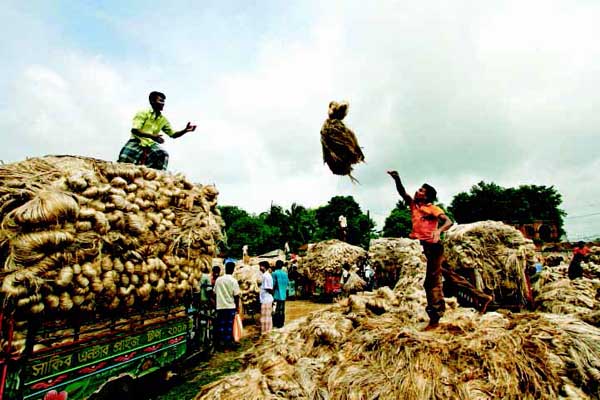
A moment of crisis, a celebration, the unexpected, a dream realized, hidden truths, a reaffirmation of what we knew. Through TV screens, newspaper pages, giant electronic screens and tiny handsets, we gather, sift, scroll and parse news unfolding. Through twitter feeds, facebook and blogs, we circulate the news that we are fed, to inform, alert and mobilise those around us. Occasionally we question. The news photograph brings down powerful autocrats, highlights the plight of a single child, shines a spotlight on communities in strife, ignites the passion of victory, shares the tragedy of loss.

But the manufacture of consent has rarely been more engineered. With everything from wars to presidential campaigns being stage-managed and with mainstream news increasingly fed by official sources, reliance on usual sources of news images has become increasingly dangerous. Continue reading “People's News”
My Best Shot
Subscribe to ShahidulNews
Guardian 16th October 2011
Photographer Shahidul Alam’s best shot
‘The fisherman told me the river is a destructive animal. It had destroyed his home many times’

-
- Interview by?Sarah Phillips
- guardian.co.uk, Sunday 16 October 2011 22.29 BST
- Article history
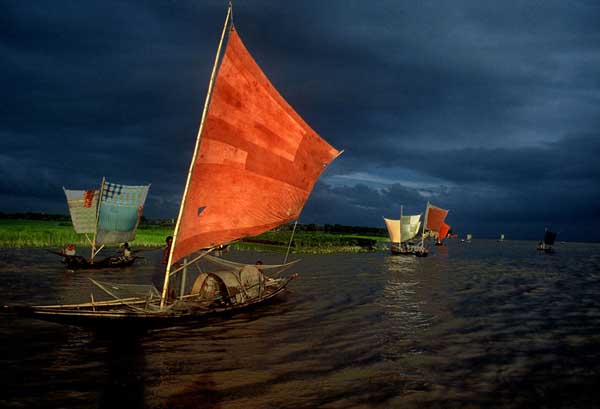
In Bangladesh, there were once over 800 species of riverboats, most of which have now disappeared, largely because of the advent of motorboats and changing lifestyles. But during the monsoon, fishermen still go out to catch a particular fish called?ilish, which is a delicacy in Bangladesh. To the connoisseur, it is the ilish of this particular river that is said to be the only type that matters.
I took a fishing boat along the river from Daulatdia, but at first the light was terrible, so I decided to?wait. I stayed with a fisherman in his home, and we went out for three days. On the third day, as sometimes happens during the monsoon, there was this shaft of light that shone through a small gap in the dark cloud formation. A red sail just?happened to be there, and for several minutes became luminescent. It was absolutely a fortunate moment, but I had been waiting for it to happen.
The fisherman told me that, while the river is very much part of his?life, it is also a very destructive animal. His home, which is very close to its bank, has been destroyed many times. That didn’t deter him, though ? the river is his life. He gave me ilish to?take home, and it was as good as I’ve ever had.
We tend to think of the river as a geographical entity. I think it is much more than that: it is something that connects humanity. My picture captures a fading way of life, unique to the Bangladeshi landscape.
CV
Born: Dhaka, Bangladesh, 1955.
Influences: A man you will never have heard of, who I always see in Dhaka. He and his son are scavengers. I’ve seen him do it for years with a quiet dignity that I admire immensely.
High point: There was the time in my life when I had the choice of making an easy living and I was able to resist it.
Low point: The death of my brother when I was 15.
- Shahidul Alam: My Journey as a Witness
- Wilmotte Gallery at Lichfield Studios,
- London
- Until 18 November
- Details:020-8968?3333
- Venue website
Aid and influence
Subscribe to ShahidulNews

Surge in Global Migration Expands Scale of an Aid Group?s Influence
Words By Jason DeParle
Photographs by Shahidul Alam
Published: New York Times August 30, 2011
DHAKA, Bangladesh ? As global migration has rapidly expanded, so has the influence of a little-known group whose eclectic work shapes migrants? lives across six continents.
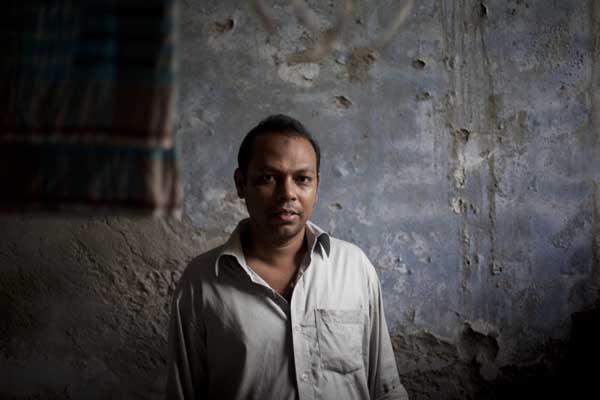

Part research group, part handyman crew, the International Organization for Migration has become the who-you-gonna-call outfit for 132 member countries grappling with the surge in migration, both legal and unauthorized. Its rapid growth is a sign that migration has outgrown most countries? ability to manage on their own. ?I haven?t made it to a country yet where migration hasn?t been high on the list of priorities,? said William L. Swing, the director general.
Yet even as its duties grow, the group operates under tight constraints that reflect the special worries migration can arouse. The United States and other rich donors largely dictate its agenda and ensure that it does not erode their power to decide which migrants they admit and how many.
?It helps them bring in the people they want and keep out the people they don?t,? said Joseph Chamie, a researcher at the Center for Migration Studies in New York.
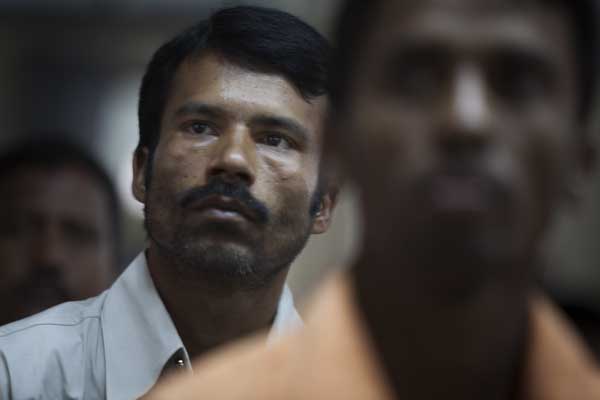
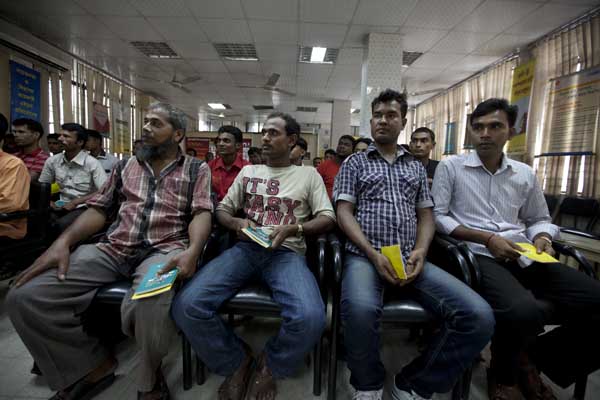
To understand the group?s rapid growth and varied duties, consider Bangladesh, where the $10 billion that migrants send home accounts for 13 percent of the economy ? making the export of people nearly as vital as the export of shirts. But migrants borrow heavily to finance their trips, and the labor recruiting industry is rife with scams.
Continue reading “Aid and influence”
Picture Power
Subscribe to ShahidulNews
World Press Photo Enter Magazine |
||||||||||||
|
||||||||||||
|
||||||||||||




